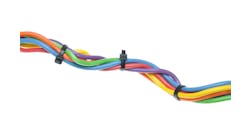Tight reactor temperature control enables the optimization of capacity and yield. What happens upfront in the reaction sets the stage for downstream processing and what ultimately ends up in the final product. Generally, increasing reactor temperature will increase reaction rate (capacity) but if the temperature is too high, side reactions may develop reducing reaction selectivity (yield). Oscillations and errors will prevent operating closer to the optimum temperature. This checklist offers questions to improve reactions by addressing the heating and cooling system design, thermal lags, split ranged discontinuities, tuning, reactant feed, and the need for a measurement of fouling and conversion.
Heating and cooling system design should provide a single phase, a constant process gain, and a low deadtime. The best way to achieve these objectives is the use of a constant high jacket or coil recirculation flow and a steam injector for the switch from cooling to heating. The constant flow keeps the secondary jacket or coil temperature loop process gain constant that is inversely proportional to flow. The use of a steam injector instead of direct steam addition prevents bubbles and hot spots. A high jacket and coil recirculation flow minimizes deadtime and the heat transfer coefficient.
Batch reactor temperature loops can use incredibly low lambda factors (e.g., 0.02). Lambda can approach a minimum that is the total loop deadtime. The tuning rules for an integrating process should be used to give a reset time that approaches three times the deadtime. These tuning rules will also keep the product of the controller gain and reset time greater than the inverse of the integrating process gain to prevent slow rolling oscillations. There is a window of allowable controller gains and reset times where too low and too high of a controller gain and reset time cause oscillations. The lack of recognition of this tuning requirement results in the common problem of reactor temperature controller gains and reset times being too low. Since a low reset time is destabilizing, one of the stabilizing effective quick fixes is to simply increase the reset time if a reactor is oscillatory.
For highly exothermic reactors that are open loop unstable reactors due to positive feedback, too low of a controller gain can be unsafe. If the controller gain is less than the inverse of the open loop gain for a reactor with positive feedback, a runaway condition will develop. Reactors with a great propensity to runaway should have the reset time increased by an order of magnitude. Some reactors with a great potential to runaway use proportional plus derivative control. The derivative time should be set to compensate for thermal lags in the heat transfer surface and measurement.
Measurement lag principally depends upon fluid velocity and any air gap between the sensor and the interior wall of the thermowell. The thermowell must extend past the baffle with a tight fitting sensor touching the tip to provide a fast measurement. The larger sensor lag of a resistance temperature detector (RTD) compared to a thermocouple (TC) is negligible compared to the thermowell lag. The RTD offers an order of magnitude better threshold sensitivity, repeatability, and lower drift than a TC. If a TC is used the reactor temperature setpoint has to be biased to account for drift and offset in the TC measurement. An RTD enables a much more accurate optimization of the temperature setpoint.
A cascade of reactor temperature to jacket or coil temperature can eliminate process gain nonlinearities from the view of the primary temperature loop. The process gain for the primary loop simply becomes the ratio of the reactor temperature measurement scale to the jacket or coil temperature measurement scale range. A cascade of jacket or coil temperature to coolant or steam flow is not used when the rangeability of most flow meters is not good enough for operation at the low flows near the split range point.
The use of small precision sliding stem valves for low cooling and heating demands can reduce the adverse effect of backlash and stiction at the split range point. Flow-to-close trim should be avoided because of the "bath tub stopper" effect at low flow. On-off valves should be added to shutoff cooling or heating. The minimization of control valve leakage leads to on-off rotary valve designs with excessive seating and sealing friction and backlash. Control valves should not be used as isolation valves and on-off valves should not be used as throttling valves.
The split range point can be set to equalize process gains based on linearized valves. The outputs to the valves can be characterized to compensate for the nonlinearity of the installed valve characteristic. A PID for valve position control (VPC) can manipulate the big valve to keep the small valve at a mid throttle position. Adaptive tuning can take care of the change in process dynamics in the switch between heating and cooling. An enhanced PID for secondary temperature control and VPC combined with analog output setpoint rate limits can eliminate unnecessary excursions of the split range point.
Integral (head) mounted wireless transmitters on thermowells offer the portability to demonstrate optimum sensor locations and online analysis of heat transfer coefficients and inferential measurement of heat transfer rate to optimize reaction rates and process efficiency as noted in the ISA-AW-2011-Wireless-Measurement-and-Control-Presentation.pdf.
Heat transfer rate is an indication of conversion rate. Near the end of the batch, if the heat transfer rate drops off the reaction is done. If the rate starts to rise again, an undesirable side reaction may have been triggered. The cooling rate can used to decide whether to end the batch to increase capacity or to extend the batch to increase efficiency.
An inferential measurement of the heat transfer coefficient can detect fouling and a consequential dangerous increase in thermal lag for highly exothermic reactors. If the thermal lag becomes larger than the positive feedback time constant of an open loop unstable reactor, a runaway condition will develop regardless of tuning.
Coriolis flow meters on the reactant feeds can provide an incredibly accurate mass flow and density measurement. The density can be used to diagnose and correct the reactant concentration in the feed stream. The reaction stoichiometric equation can be enforced by extremely accurate reactant ratio flow control afforded by the Coriolis meters. The optimization of capacity and efficiency then comes down to optimization of the temperature setpoint and the decision on when to end the batch.
The following checklist is not intended to cover all the specification requirements. For more info see Chapter 6 in the ISA book Advanced Temperature Measurement and Control - 2nd Edition and the ISA Automation Week 2011 "Biological and Chemical Reactor Control Opportunities" paper and presentation. Reliability and precision (noise, repeatability, resolution, and threshold sensitivity) are most important.
•1. Is a RTD used for temperatures below 400 degC to improve threshold sensitivity, drift, and repeatability by more than a factor of ten compared to TC if vibration is not excessive?
•2. Does the thermowell extend past baffles where the bulk velocity is high to minimize lag?
•3. Is the thermowell away from the reactant dip tube to better see reaction temperature?
•4. Does the sensor touch the bottom of the thermowell and fit tightly to minimize lag?
•5. Is a high axial agitation pattern and pumping rate used to minimize turnover time?
•6. Is cascade control of reactor to jacket or coil temperature used to remove nonlinearities and cooling and heating disturbances from the view of the reactor temperature?
•7. Is a high and constant jacket and coil recirculation flow used to keep the cooling and heating system deadtime low and the heat transfer coefficient high and fouling rate low?
•8. Is fouling of the heat transfer surface monitored to prevent an excessive thermal lag?
•9. Is the total loop deadtime, measurement lag, and heat transfer lag all less than the positive feedback time constant in an open loop unstable reactor to prevent a runaway?
•10. Is the controller gain greater than the inverse of the open loop gain to prevent a runaway?
•11. Is the controller reset time increased by an order of magnitude to prevent a runaway?
•12. Is the product of controller gain and reset time greater than the inverse of the integrating process gain to prevent slow rolling oscillations?
•13. Was an adaptive tuner used with the tuning rules for an integrating process and the tuning scheduled to compensate for the changes in process dynamics for cooling and heating?
•14. Is the rate time large enough to compensate for measurement and heat transfer surface lags?
•15. Are sliding stem "flow-to-open" trim control valves with low friction packing, diaphragm actuators and digital positioners used for throttling and on-off valves for isolation?
•16. Is valve position control (VPC) used to enable the throttling of a small extremely precise valve?
•17. Is an enhanced PID used to help prevent VPC and split range point limit cycles?
•18. Is external-reset feedback and analog output setpoint rate limits used to prevent unnecessary crossing of the split range point?
•19. Can the heat transfer coefficient and heat transfer rate be computed online?
•20. Can the batch cycle time be optimized by an inferential measurement of conversion rate from heat transfer rate?
•21. Are Coriolis meters used on reactant feeds?
•22. Is reactant mass flow ratio control used to enforce the stoichiometric ratio?




